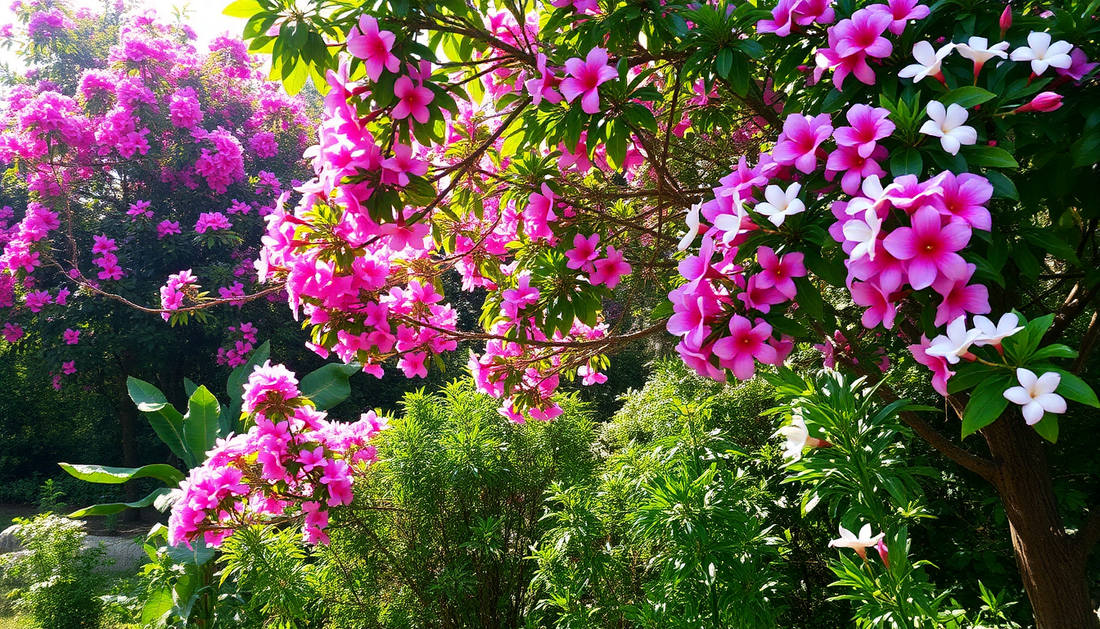
The Best Flowering Trees to Grow in Sarjapur's Climate
As the sun rises over the lush greenery of Sarjapur, the air is filled with the sweet fragrance of blooming flowers. Gardening enthusiasts in this vibrant Bangalore suburb have long been captivated by the diverse array of flowering trees that thrive in the region's temperate climate. Whether you're a seasoned green thumb or just starting to cultivate your outdoor oasis, exploring the best flowering trees for Sarjapur's unique conditions can elevate your landscape to new heights of beauty and tranquility.
Choosing the Right Flowering Trees for Sarjapur
Sarjapur's climate is characterized by warm, humid summers and mild, pleasant winters, making it an ideal location for a wide range of flowering tree species. When selecting the perfect additions to your garden, it's essential to consider factors such as sunlight exposure, soil type, and water requirements to ensure the long-term health and vibrant blooms of your trees.
Crape Myrtle (Lagerstroemia indica)
One of the most popular and versatile flowering trees in Sarjapur is the Crape Myrtle. This deciduous tree boasts stunning, colorful blooms that range from vibrant pinks and purples to delicate whites and reds, depending on the cultivar. Crape Myrtles thrive in full sun and well-drained soil, making them a low-maintenance choice for gardens in Sarjapur. Their compact size and graceful, multi-trunked form also make them an excellent option for smaller spaces or as accent pieces in larger landscapes.
Jacaranda (Jacaranda mimosifolia)
The Jacaranda tree is a true showstopper, with its stunning, cascading clusters of lavender-blue flowers that bloom in the spring and early summer. This semi-deciduous tree is native to South America but has found a perfect home in Sarjapur's warm climate. Jacarandas prefer full sun and well-drained soil, and their feathery, fern-like foliage provides a beautiful contrast to their vibrant blooms.
Gulmohar (Delonix regia)
Also known as the Royal Poinciana or Flame Tree, the Gulmohar is a true tropical delight that thrives in Sarjapur's warm, humid conditions. This deciduous tree is renowned for its spectacular, fiery-red flowers that bloom in the summer, creating a stunning display against the backdrop of its lush, green foliage. Gulmohar trees require full sun and well-drained soil, and their fast growth rate makes them a popular choice for quick-growing, eye-catching landscaping.
Frangipani (Plumeria)
The fragrant and exotic Frangipani tree is a beloved addition to many Sarjapur gardens. This small, deciduous tree produces clusters of delicate, sweetly scented flowers in a variety of colors, including white, yellow, pink, and red. Frangipanis prefer full sun and well-drained soil, and their unique, twisted trunks and branches add an intriguing sculptural element to any landscape.
Trumpet Tree (Tabebuia)
The Trumpet Tree, also known as the Ipe or Pau d'Arco, is a stunning, deciduous tree that bursts into a vibrant display of trumpet-shaped flowers in the spring. These trees come in a range of colors, including yellow, pink, and lavender, and their showy blooms often appear before the foliage emerges, creating a truly breathtaking sight. Trumpet Trees thrive in full sun and well-drained soil, making them a perfect fit for Sarjapur's climate.
Caring for Flowering Trees in Sarjapur
Maintaining the health and vitality of your flowering trees in Sarjapur requires a balanced approach to watering, fertilizing, and pruning. Proper care and attention will ensure that your trees continue to flourish and provide years of stunning seasonal displays.
Watering and Soil Preparation
Flowering trees in Sarjapur generally require consistent, moderate watering, especially during the hot, dry summer months. Avoid overwatering, as this can lead to root rot and other issues. Before planting, amend the soil with organic matter, such as compost or well-rotted manure, to improve drainage and nutrient content.
Fertilizing and Pruning
Regular fertilization, especially during the growing season, can help support the overall health and vigor of your flowering trees. Choose a balanced, slow-release fertilizer and follow the manufacturer's instructions for application. Pruning is also essential for maintaining the shape and structure of your trees, as well as encouraging optimal flower production. Prune in the late winter or early spring, before new growth appears.
Incorporating Flowering Trees into Your Sarjapur Landscape
Flowering trees can serve a variety of purposes in your Sarjapur garden, from providing shade and privacy to adding pops of color and visual interest. Consider planting a mix of species to create a diverse, ever-changing display throughout the year.
Specimen Trees and Focal Points
Use a single, large-growing flowering tree as a stunning focal point in your landscape, such as a majestic Jacaranda or a vibrant Gulmohar. These specimen trees can serve as the centerpiece of a garden or lawn, drawing the eye and creating a sense of grandeur.
Flowering Tree Allées and Borders
Line your driveway or garden paths with a row of coordinating flowering trees, such as Crape Myrtles or Trumpet Trees, to create a beautiful, cohesive allee. Alternatively, use flowering trees to define the edges of your property or to create a lush, natural border around your garden.
Understory Plantings
Complement your flowering trees with a diverse understory of shade-loving shrubs, perennials, and groundcovers. This layered approach can enhance the overall beauty and interest of your landscape, while also providing valuable habitat for local wildlife.
As you explore the vast array of flowering tree options for your Sarjapur garden, remember to choose species that are well-suited to the local climate and soil conditions. With the right care and placement, these vibrant, blooming trees can transform your outdoor space into a true oasis of natural beauty and serenity.







No comments